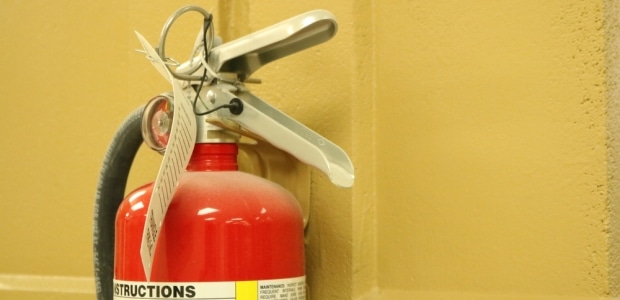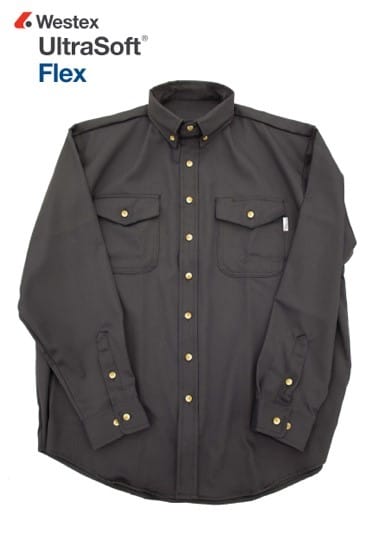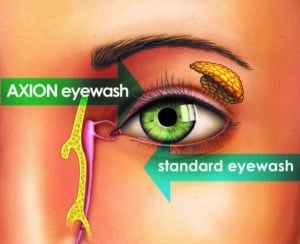[via OHS Online]
 Six Emergency Response Habits Employees Need to Develop
Six Emergency Response Habits Employees Need to Develop
Employees need to refresh their training and have drills regularly so they will be able to rely on both their knowledge and their experience when emergencies happen.
By Karen D. Hamel Jul 01, 2017
If safety glasses, ear plugs, and steel-toed shoes are required in a production area, most employees who work there every day will eventually get into the habit of wearing them—especially when they receive coaching and positive reinforcement for remembering them. When the same start-up procedure is used at the beginning of the shift every day, it will become habitual, too.
Developing good safety habits can help reduce the chance of injuries. But what happens when there is an emergency or something out of the normal happens? Employees need to be just as prepared for the unexpected as they are for routine operations.
Training employees on the types of emergencies that could happen at or around the facility and what their role is during those emergencies are essential first steps in preparing them to respond appropriately. In some cases, the training may be even be required by OSHA regulations. Drills help everyone to apply what they have learned and actually walk through the response process so that it becomes familiar. The trick is having drills often enough that employees can develop emergency response habits.
Many professional responders agree that when there is an emergency, people’s actions don’t rise to the occasion—they fall back to their highest level of training. This happens because it is what they know, which makes them comfortable with the actions they need to take. That’s one of the reasons why even the most seasoned responders train and drill regularly, so that they know what they are going to do, which makes them ready to act instinctively when the need arises.
Given that even professional responders continually train and drill so that they will be prepared to act, it is wrong to assume that employees will instinctively know what to do when there is an emergency. Just like the firefighters, hazmat team, ambulance crew, or anyone else who may be called for assistance, employees need to refresh their training and have drills regularly so that they will be able to rely on both their knowledge and their experience when emergencies happen.
While it is probably not realistic to train every employee to be a contingency planner who is prepared for any time of emergency that could ever happen, each employee needs to specifically know what they are expected to do during different types of emergencies. Here are a few of the basic emergency response habits every employee can develop.
Exit Routes
Some facilities have multiple types of alarms, but for many facilities, an alarm means that something is wrong and everyone should evacuate. Each employee should know where the exit routes are and where the closest exit is. In addition, they should also be able to leave the building at least two different ways.
Be sure that evacuation drills allow employees to practice using both primary and alternative routes so that they are less likely to panic if they aren’t able to use their primary route in an emergency. Employees also should know where to go after they leave the building and whom to report to after they have evacuated.
Chemical Splashes
Under OSHA’s Hazard Communication Standard, hazardous chemical containers need to be properly labeled. The information on the label provides basic information about a chemical’s hazard. But when an employee has been splashed or unsafely exposed to a hazardous chemical, Safety Data Sheets (SDS) can provide more details to better help the affected employee. Knowing where to locate SDS and how to quickly find the one that is needed allows faster response and can lessen the extent of an injury.
Eyewash Stations and Drench Showers
In areas where corrosive chemicals are used, knowing how to get to eyewash stations and drench showers quickly can literally mean the difference between a first aid incident and a recordable injury with a long recovery time. Try blindfolding employees to see whether they can reach the nearest eyewash or drench shower in less than 10 seconds.
Fire Extinguishers
Most building codes require fire extinguishers; because they need to be checked monthly, most are fully charged and ready to use. However, whether or not employees should actually use them is sometimes a debate. Some facilities develop “do not use” policies because they feel that having an employee attempt to put out an incipient fire with an extinguisher is too big of a risk. Instead, they want their employees to pull the fire alarm and exit the building.
For facilities that do not have this type of policy, annual fire extinguisher drills can help them to remember to pull, aim, squeeze, and sweep. Be sure that these drills also include instruction on exiting the building if they have exhausted an extinguisher but have failed to put out the fire.
Spill Response
Most spills that happen in fixed facilities are small and can be safely cleaned up by employees in the immediate area. OSHA calls these “incidental spills.” When a spill creates an unsafe atmosphere or threatens the health of employees, it is most likely an “emergency spill” and needs to be cleaned up by employees who have been trained to OSHA’s Hazardous Waste Operations and Emergency Response (HAZWOPER) Standard.
All employees need to be taught how to quickly determine whether they are capable of cleaning up a spill or need to call in trained emergency spill responders. Volume, location, chemical properties, and levels of training are all factors that need to be taken into consideration when training employees how to determine whether a spill is incidental.
Injury Response and Reporting
Facilities that are not located in close proximity to hospitals or infirmaries need to have employees who are trained to administer first aid. While it is not necessary for every employee to receive first aid training, it is important for every employee to know what to do when someone is injured. At a minimum, every employee should know whom to report an injury to, as well as the process that will be used to investigate the root cause of an incident. Even elementary skills such as being able to retrieve the first aid kit or AED, or being able to meet the ambulance at the door and direct them to an injured employee, are helpful.
Few people ever reach the point where responding to emergencies is as instinctive as tying their shoes. But without regular emergency training and drills, response actions will never become familiar, let alone become habits. The more comfortable employees are with their roles in emergency response, the more likely they will be to follow established plans and avoid injuries.
This article originally appeared in the July 2017 issue of Occupational Health & Safety.
How ASSE Safety 2017 Innovations Enhance Employee Safety
Authors: Scott Francis, Midwest Regional Market Manager, Westex by Milliken and Samantha Hoch, Marketing Communications Strategist, Haws®
![]()
![]()
We believe when it comes to safety, you should not have to compromise. Leaders in the safety industry design innovative, yet functional, equipment to protect workers while on the job. From emergency response equipment to flame resistant (FR) fabrics, today’s safety programs incorporate leading technology to provide a multifaceted plan to combat job-related hazards.
Today, we partnered with Haws, a leading emergency response equipment manufacturer, to preview new safety innovations premiering at the upcoming ASSE Safety 2017 in Denver, June 19-21, 2017.
Westex by Milliken: UltraSoft® Flex
The Westex UltraSoft® line is one of our most popular FR fabrics and has a strong reputation for providing an excellent balance of protection, comfort, and value. Designed with both comfort and safety in mind, UltraSoft® offers arc flash and flash fire protection that you can trust.
At ASSE Safety 2017, booth 1525, we’re debuting the newest evolution of Westex UltraSoft®, UltraSoft® Flex FR fabric, which builds on this trusted line to offer even more flexibility – allowing for superior mobility and maximum comfort.
Westex UltraSoft® Flex provides 50% more stretch than other FR fabrics. According to a wear trial, three out of four workers prefer everyday FR apparel constructed with our new UltraSoft® Flex fabric when working on the job, as it allows them to move freely and comfortably despite the specific task at hand.
In addition to added flexibility, Westex UltraSoft® Flex also offers excellent softness, shrinkage control, and guaranteed flame resistance made possible with our advanced, proprietary engineering process
Westex UltraSoft® Flex is NFPA 2112 certified and provides NFPA 70E Category 2 protection – making it a leading choice for everyday arc flash or flash fire protection in a variety of industries.
UltraSoft® Flex is the FR fabric your employees will want to wear. Multi-hazard protection, increased mobility and superior comfort, Westex UltraSoft® Flex makes adopting everyday FR apparel simple. It removes the decision of protection or comfort on the job and makes both a fundamental benefit of daily FR workwear.
Haws: AXION® MSR
 For more than 110 years, Haws has been committed to inventing, designing, and manufacturing hydration equipment as well as standardized and customized emergency response products.
For more than 110 years, Haws has been committed to inventing, designing, and manufacturing hydration equipment as well as standardized and customized emergency response products.
Haws’ core emergency equipment product line includes eyewashes, which remove contaminants from the eyes; eye/face washes, which remove contaminants from the eyes and the face; drench showers, which remove contaminants from the entire body; and an eye/face wash and a drench shower together, which is called a combination unit. They also offer all variations of configurations with stainless steel or ABS plastic options.
Traditional eyewash water flows from the outside-in, pushing contaminants toward the inner corners of the eyes – where susceptible tear ducts, glands, and canals are located. The ideal approach is to sweep contaminants away from the tear ducts to the outside of the eye. Haws’ innovative nature came forth to create the AXION MSR technology, with MSR standing for Medically Superior Response. AXION MSR is the only eye/face wash adhering to this preferred methodology, with inverted water streams gently flushing contaminants away from the sensitive glands and ducts that surround the eye.
 The advanced technology process behind the eye/face wash was considered when redesigning emergency response showerheads. The AXION MSR showerhead has a hydrodynamic design to minimize strong physical pressure by releasing smaller, more discreet droplets. In addition, the engineering team improved the conventional showerhead design by spinning the water inlet, making the distribution even across the entire footprint of the flow. These inventive advancements allow for consistent, comfortable water pressure.
The advanced technology process behind the eye/face wash was considered when redesigning emergency response showerheads. The AXION MSR showerhead has a hydrodynamic design to minimize strong physical pressure by releasing smaller, more discreet droplets. In addition, the engineering team improved the conventional showerhead design by spinning the water inlet, making the distribution even across the entire footprint of the flow. These inventive advancements allow for consistent, comfortable water pressure.
To discover more cutting-edge innovations to protect employees while attending ASSE Safety 2017, visit Westex by Milliken at Booth 1525 and Haws at Booth 615.
For more information on the innovations discussed here, view the following resources:



